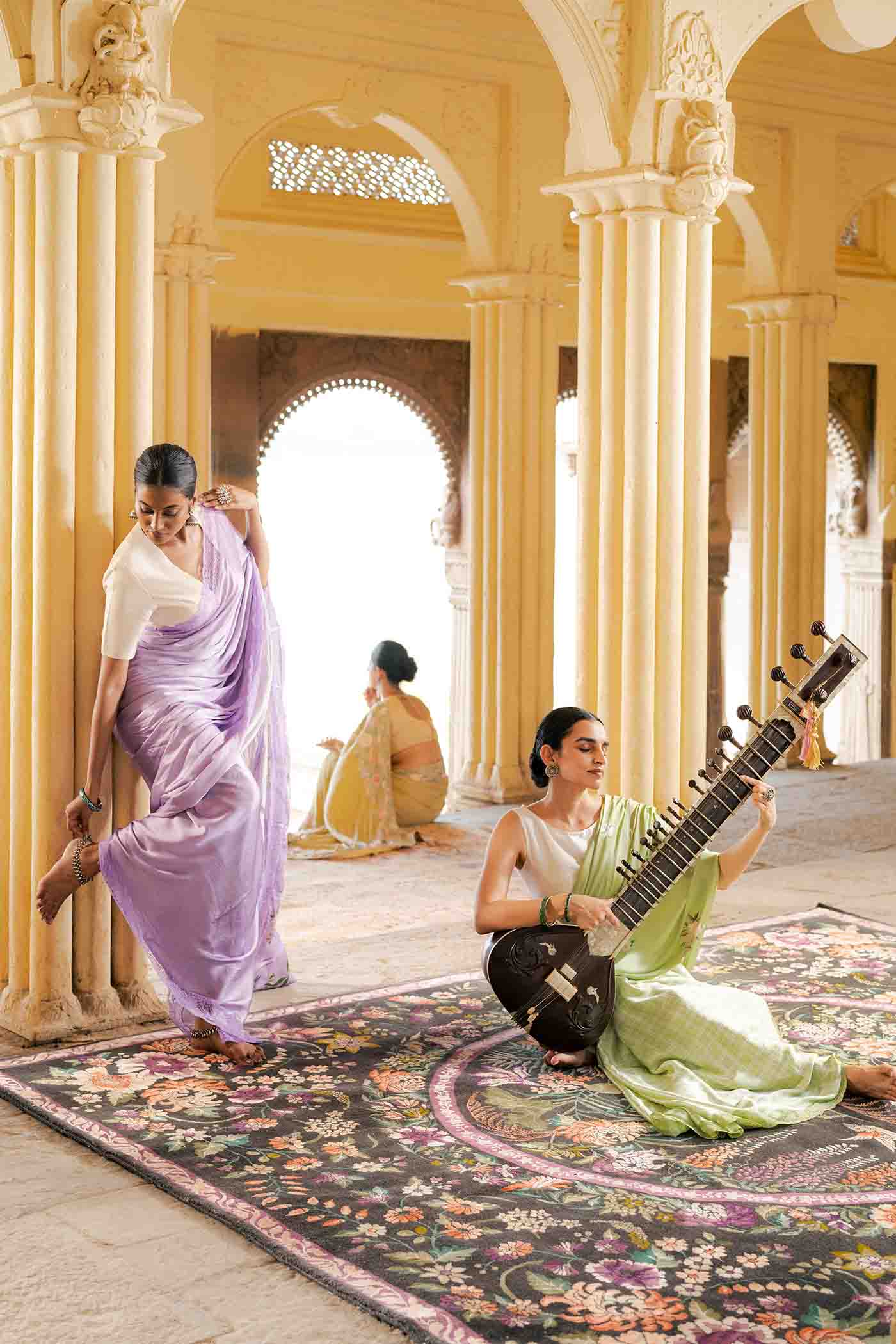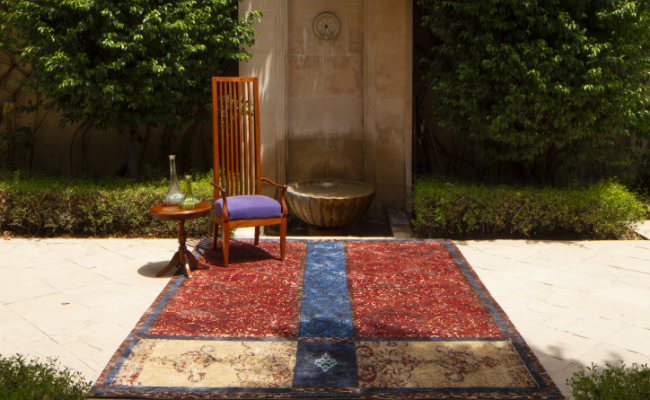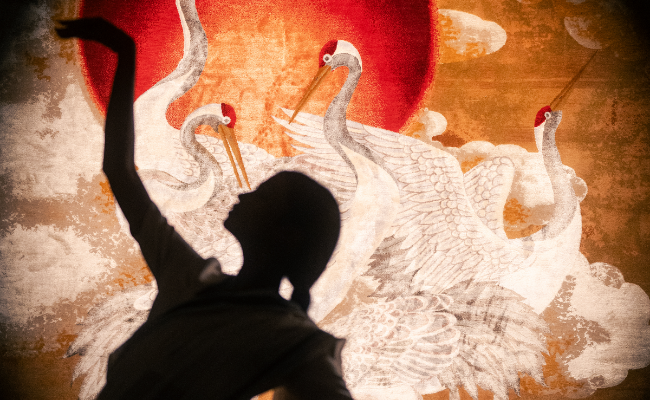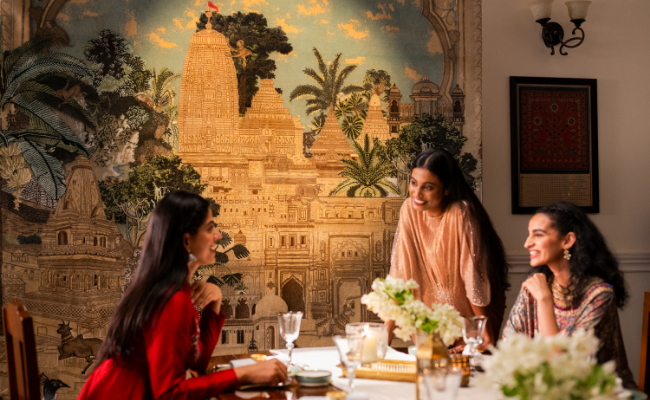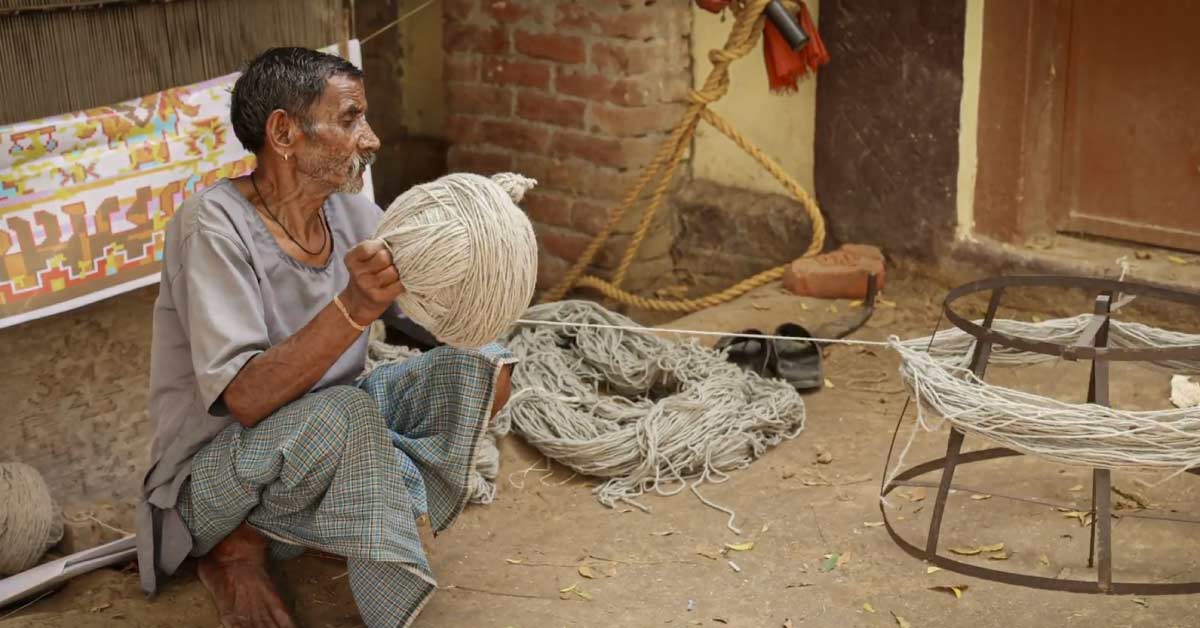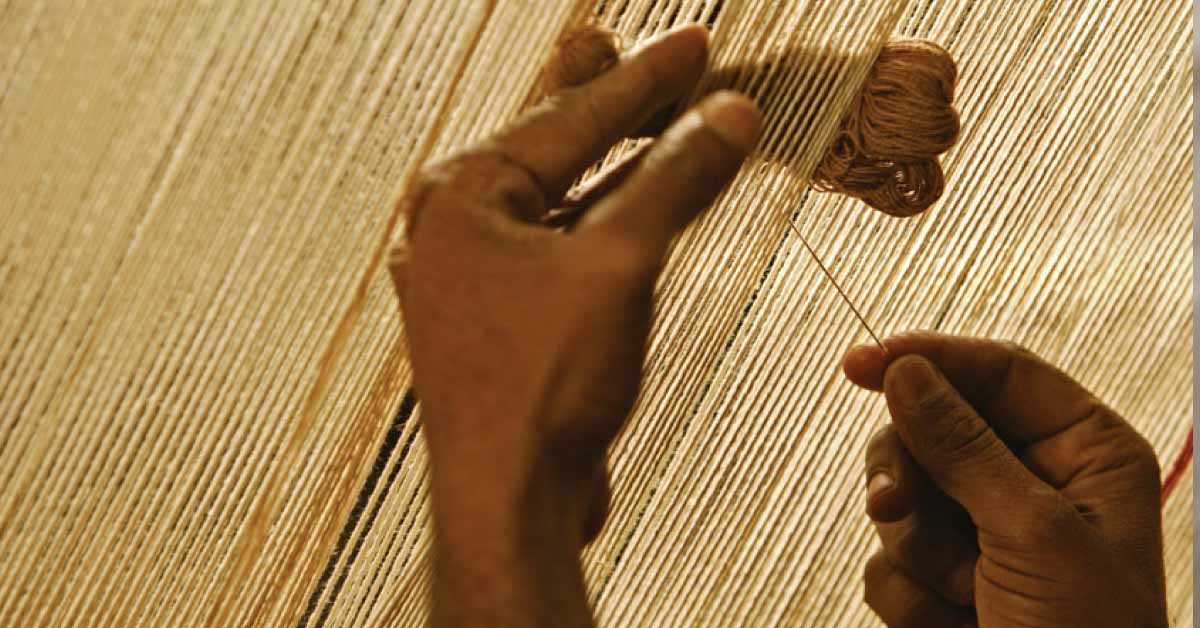
Why Hand-Knotted Carpets Take So Long?
Everyone must have made a rangoli at least once in their lifetime. There are 2 kinds: people who just get a stencil, pour the colors over the patterns, and a geometrically perfect rangoli is ready. This is hardly a 60-minute process. The other kind takes upto a day to make the whole rangoli. Initially, the rough design is drawn using chalk on the ground, multiple colors are selected, and the whole thing is done by hand. While both Rangois might look equally beautiful, the 2nd one will still have an edge over. The 2nd rangoli won’t just be a work of decor but a result of precious time invested, the efforts, and the affection of the maker. Well, that’s the magic of handmade pieces.

Whenever anyone speaks of something handmade, Obeetee Carpets is always on the list. For the past century, we have been hand-making carpets for the world. The decor industry is indeed a tricky and creative one. We often have to face questions in terms of our delivery for custom orders. From our website, you can simply add any rug to your cart, and it will be at your doorstep within a week. However, for custom orders, we would need at least 45 days or more to deliver the finished product. Just like the 2nd rangoli, a handmade piece of art takes time.
The art of hand-making rugs has different techniques. A hand-tufted or hand-loomed rug is crafted using a hand-operated tufting gun or hand-operated frame/loom. Since there are some basic machines involved, these take comparatively less time than a hand-knotted rug. A hand-knotted rug is solely and purely made by the hands of the weaver. Each knot is tied using a pin. Irrespective of the knot count per square inch, a knotted carpet is a true work of art.
Hand-knotting carpets is a technique that has been passed down through generations. Just like legacy, this technique runs the livelihood of a lot of weaver communities. Hand-knotting a rug might seem easy, but there is a detailed process involved. Well, now that we have spoken about it, let’s dive into the details.
The initial step is to decide and finalise the design of the carpet. It is drawn on a piece of paper that is set up on the frame. This step is followed by selecting the material of the carpet and dyeing the yarns. Dyeing yarns is a time-consuming process. Once this is done in our factory, the yarns are sent to the weaver’s home. The weaver then starts to weave the carpet. For you, this might just be a decorative accent, but for the weaver, it is a piece of his/her soul. Imagine sitting in a weaver’s room, in pin-drop silence, all you can hear are the slight breaths and the rhythmic sound of the knots being tied together. This is almost a meditative process for the person who is crafting the rug. For so long, the rug stays with the weaver; during this time, it becomes a part of his/her life. Bearing witness to all the stories of the family, it encapsulates legacy, art, and affection in every knot. Simply getting ready to do the same at your place. The finished carpet is later set back to the factory for the final finishing, binding, and washing, then delivered to your doorstep.
A hand-knotted carpet from our house in Bhadohi can have upto 300 knots per square inch. Each of these rugs can be used not only as a floor covering but also as a tapestry because of their finesse. To experience the magic of such a piece, which embraces art, tradition, culture, and legacy, you can visit any of our flagship stores in the major cities of the country or check out our e-commerce website- https://www.obeetee.in/


